
Doñana National Park or Parque Nacional y Natural de Doñana is a natural reserve in Andalucía, southern Spain, in the provinces of Huelva, Cádiz and Seville. It covers 543 km2 (209.65 sq mi), of which 135 km2 (52.12 sq mi) are a protected area. The park is an area of marshes, shallow streams, and sand dunes in Las Marismas, the delta where the Guadalquivir River flows into the Atlantic Ocean. It was established as a nature reserve in 1969 when the World Wildlife Fund joined with the Spanish government and purchased a section of marshes to protect it. The eco-system has been under constant threat by the draining of the marshes, the use of river water to boost agricultural production by irrigating land along the coast, water pollution by upriver mining, and the expansion of tourist facilities. It is named after Doña Ana de Silva y Mendoza, wife of the 7th Duke of Medina Sidonia.

Cádiz is a province of southern Spain, in the southwestern part of the autonomous community of Andalusia. It is the southernmost part of mainland Spain, as well as the southernmost part of continental Europe.
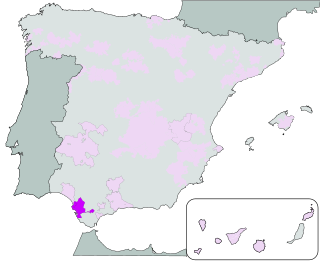
Sherry is a fortified wine made from white grapes that are grown near the city of Jerez de la Frontera in Andalusia, Spain. Sherry is produced in a variety of styles made primarily from the Palomino grape, ranging from light versions similar to white table wines, such as Manzanilla and fino, to darker and heavier versions that have been allowed to oxidise as they age in barrel, such as Amontillado and oloroso. Sweet dessert wines are also made from Pedro Ximénez or Moscatel grapes, and are sometimes blended with Palomino-based sherries.
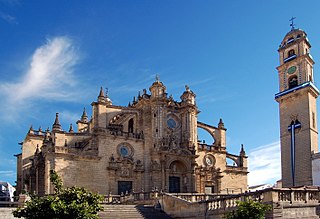
Jerez de la Frontera, or simply Jerez, is a city and municipality in the province of Cádiz in the autonomous community of Andalusia, in southwestern Spain. It is located in Campiña de Jerez, midway between the Atlantic Ocean and the Cádiz Mountains.

Sanlúcar de Barrameda, or simply Sanlúcar, is a city in the northwest of Cádiz province, part of the autonomous community of Andalucía in southern Spain. Sanlúcar is located on the left bank at the mouth of the Guadalquivir River opposite the Doñana National Park, 52 km from the provincial capital Cádiz and 119 km from Sevilla capital of the autonomous region Andalucía. Its population is 68,656 inhabitants.
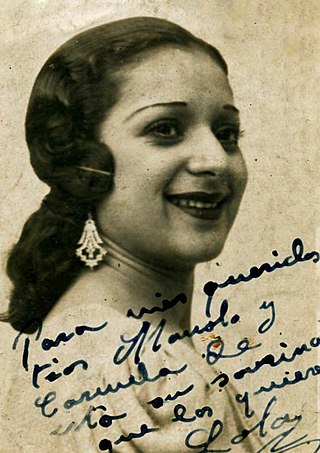
María Dolores "Lola" Flores Ruiz was a Spanish actress, bailaora and singer. Born in Jerez de la Frontera, Flores became interested in the performing arts at a very young age. Known for her overwhelming personality onstage, she debuted as a dancer at age sixteen at the stage production Luces de España, in her hometown. After being discovered by film director Fernando Mignoni, Flores moved to Madrid to pursue a professional career in music and film, with her first gig being the lead role in Mignoni's Martingala (1940). Flores succeeded as a film and stage actress. In 1943 she obtained her breakthrough role in the musical stage production Zambra alongside Manolo Caracol, in which she sang original compositions by Rafael de León, Manuel López-Quiroga Miquel and Antonio Quintero, including "La Zarzamora" and "La Niña de Fuego", mostly singing flamenco music, copla, rumba and ranchera. She then started to receive widespread media coverage.
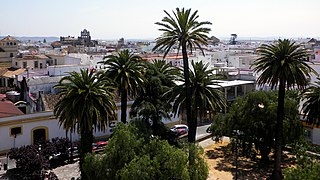
El Puerto de Santa María, locally known as El Puerto and historically in English as Port Saint Mary, is a municipality of Spain located on the banks of the Guadalete River in the province of Cádiz, Andalusia. As of 2016, the city has a population of c. 88,184, of which some 50,000 live in the urban center, and the remainder in the surrounding areas.

Alfonso of León, Lord of Molina was an infante (prince) of León and Castile, the son of King Alfonso IX of León and his second wife Queen Berengaria of Castile. He was the brother of King Ferdinand III of Castile and León, and father of Queen Maria of Molina, wife of King Sancho IV. He became Lord of Molina and Mesa after his first marriage to Mafalda González de Lara, the heiress of those lands.
Don Álvaro Domecq y Díez was born into an aristocratic Spanish sherry family in Jerez, of Cádiz, a province of Andalucia in south western Spain.

The Battle of Jerez took place in 1231 near the southern Spanish city of Jerez de la Frontera during the Reconquista. King Ferdinand III of Castile and León's troops fought against those of Emir Ibn Hud of the taifa of Murcia. The Castilian forces were led by Ferdinand's brother, Prince Alfonso de Molina, assisted by Álvaro Pérez de Castro; according to some accounts Castro led the Castilians, not Molina. The battle is traditionally seen as marking the collapse of Ibn Hud's authority, and allowing the rise of his successor, Muhammad I.
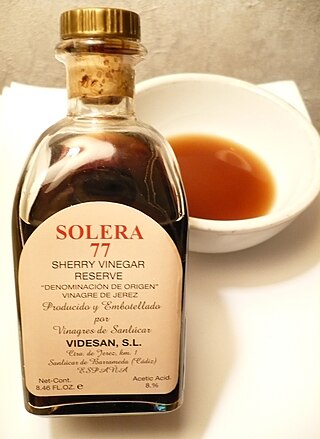
Sherry vinegar is a gourmet wine vinegar made from sherry. It is produced in the Spanish province of Cádiz and inside the triangular area between the city of Jerez de la Frontera and towns of Sanlúcar de Barrameda and El Puerto de Santa María, known as the "sherry triangle".

Markham's storm petrel is a species of storm petrel in the family Hydrobatidae. An all-black to sooty brown seabird, Markham's storm petrel is difficult to differentiate from the black petrel Procellaria parkinsoni in life, and was once described as conspecific with, or biologically identical to, Tristram's storm petrel Hydrobates tristrami. Markham's storm petrel inhabits open seas in the Pacific Ocean around Peru, Chile, and Ecuador, but only nests in northern Chile and Peru, with ninety-five percent of all known breeding populations in 2019 found in the Atacama Desert. First described by British ornithologist Osbert Salvin in 1883, the bird was named in honor of Albert Hastings Markham, a naval officer who collected a specimen off Peru.

Feria de Jerez, also known as Feria del Caballo, is a celebration in the Spanish municipality Jerez de la Frontera, traditionally held in the first or second week of May. It is the most important fair in the Province of Cádiz and is listed as one of the Fiestas of International Tourist Interest of Spain by the Ministry of Industry (Spain). It was last held 7−14 May 2022 and will next be held 6−13 May 2023.
Mauricio is a Spanish and Portuguese masculine given name, equivalent to English Maurice and derived from the Roman Mauritius. It is of Latin origin, and its meaning is "dark-skinned, Moorish".
Antonio Cano Gea (1917–1987) was a Spanish naturalist, photographer and journalist. He was born in Serón in 1917 and died in Almería in 1987.

González Byass is one of Spain's most well-known sherry bodegas. Its origins can be traced to 1835 when it was founded by Manuel María González Angel, who was subsequently joined by his English agent, Robert Blake Byass. The business was further expanded by the second generation of the González family, amongst them Manuel Críspulo González y Soto. The González family assumed sole control of the business in 1988. The firm produces the fino sherry Tío Pepe.
Diez or Díez is a surname. Notable people with the surname include:

Don Manuel Críspulo González y Soto, 1st Marquis of Bonanza, was a Spanish entrepreneur of the González Byass wine and sherry company and a philanthropist.
Marquis of Bonanza is a hereditary title in the Spanish nobility. The marquisate was bestowed by Maria Christina of Austria as Queen Regnant on behalf of her son Alfonso XIII of Spain on Manuel Críspulo González y Soto, by Royal Decree on 6 February 1902. Bonanza refers to a port of Sanlúcar de Barrameda, near the home base of the González family.
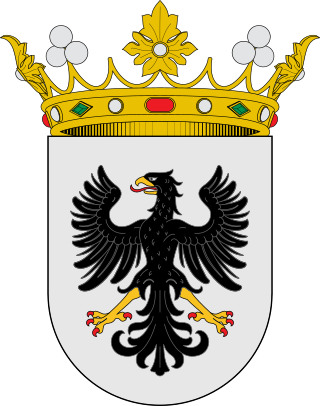
Marquess of Torre Soto de Briviesca, commonly known as Marquess of Torre Soto, is a hereditary title in the Peerage of Spain, granted in 1918 by Alfonso XIII to Pedro Nolasco, knight of the Order of Charles III and Gentilhombre of the king.















